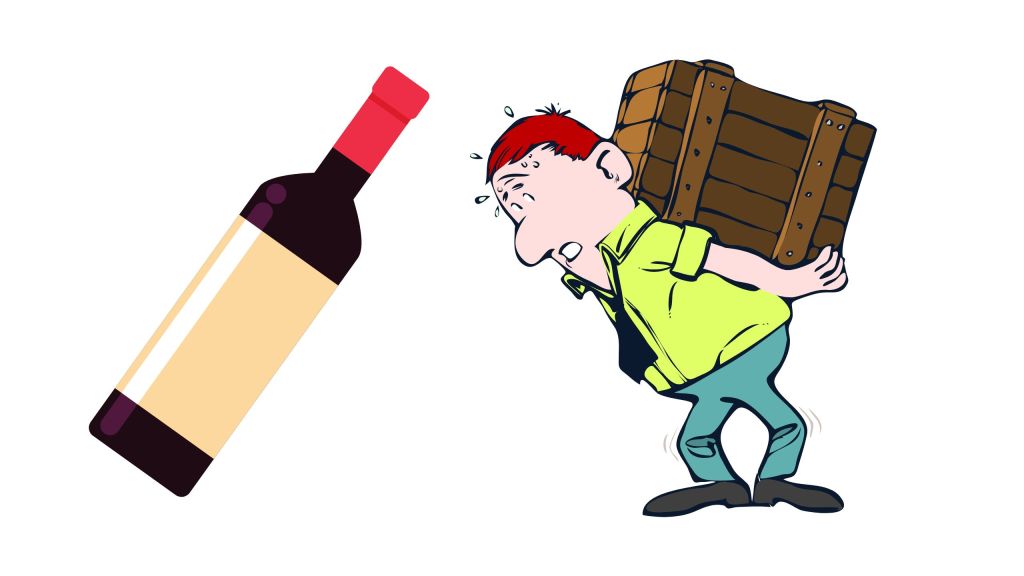
I am hardly the first person to complain about heavy wine bottles and I will not be the last. A heavy bottle does not help to store wine any better than a lighter format; there is no quality difference. During the Pandemic, I kept hearing about the great wine bottle shortage and some producers said they resorted to a heavier bottle as that is what was most available and they could not access a lighter stock.
A heavy bottle is not just a journey from a producer to a distributor or a consumer’s home; a heavy bottle encompasses the bottle traveling from where it is manufactured to the respective producer and then it can go to a distribution or fulfillment center to a home or to an on or off-premise business. In 2023, I am still receiving at least 8-10% of wines in heavy bottle formats (and no decrease YoY). I keep thinking this number will decrease and no matter how we talk about sustainability and green packaging this has made no difference with some wine products. I have been on calls with other wine journalists and this issue does come up and producers might wince when they hear these comments and sometimes they assure they are making the change to lighter bottles.
I posted a survey (below) asking what people think about bottle weight size and (though not a large response rate) it does show that the majority of people are not in favor of the heavy bottle format. But even in this small population, approximately one third either likes or doesn’t think about bottle weight (I do think this is a high number). A small bottle format doesn’t diminish wine quality and certainly producers or shippers would see smaller shipping bills (while producers have high shipping costs they do have negotiated rates and while a savings might be small–it is still a savings).
Here are some bottle weights I have found (some could be slightly lighter but not much more so and unfortunately heavier than 1000 g.):
- 450-500 g/bottle / .99 -1.1 lbs – light to standard bottle format
- 1000 g/bottle / 2.2 lbs – heavy bottle format
Using a carbon footprint calculator and perhaps taking a conservative number like 100,000 heavy wines bottles manufactured in China and exported to California. Also let’s say (as shown below) how replacing heavy wine bottles with lighter weight bottles would look like for a carbon footprint savings:
- 100,000 Heavy wine bottles – 2.2 lbs / 1000 g. = 7817.27 kg CO2
And replaced these with lighter weight bottle:
- 100,0000 Lighter wine bottles 1 lbs / 454 g. = 3556.15 kg CO2
- The CO2 savings is approximately 4261.12 kg – Imagine a world (sounding like a movie trailer) that we could realise CO2 savings routinely based on lighter bottles being utilised and most of all no one would have a decrement in wine quality or enjoyment.
I think the above scenario is very conservative and I do think the CO2 savings is higher–there is a dependency on factors such as final destination of wines and those calculations will be higher that this minimum savings amount illustrated above.
But these are estimates from manufacturing country to importing country and this estimate doesn’t include potential savings of when it is shipped throughout the US. Now 100,000 heavy wine bottles is no doubt a small number which represents approximately 8,333 cases–I can imagine the total usage of heavy wine bottles is many, many multiples above this number (100,000 wine bottles).
I have researched and have not been able to obtain any data on where most of the heavy wine bottle formats are produced – I am aware of production occurring in the US and China. I also looked for how much is produced and utilized by wine producers annually and, of course, there are perhaps estimates but I cannot confirm any numbers showing what the usage of heavy wine bottles might look like.
I do think this is a quick hit for both planet and wine producers to implement using lighter wine bottles but just because it seems like a quick hit I am not optimistic that will happen. Furthermore, I am not optimistic that heavy bottles will become obsolete in my lifetime! I am also not optimistic that heavy bottle formats will be regulated out of existence. Consumer product packaging is not just about wine but other consumer product categories and no doubt an army of lobbyists will keep that from happening. But I am hopeful that consumer expectation is what will save the day by expecting and demanding lighter wine bottles.
I have revised my Sample Policy this month (August 2023) and I will no longer accept and review heavy bottle format wines. I need to act accordingly to what I am advocating. I do think that the more consumers and even wine reviewers start to make their preferences known that the use of heavy bottle formats might come to an end sooner. This is no longer a trend of using heavy wine bottles; it has become an acceptable format in our market landscape today. But I do think if a producer is looking at organic, sustainable, and biodynamic practices the wine bottle is a great place to start (it is after all how we get to experience almost all wine today). There is no better statement than aligning to potential current wine production practices in highlighting a vineyard-to-table landscape of transparency and good will.
Santé ,
James
© 2023 James Melendez / JamesTheWineGuy— All Rights Reserved – for my original content, drawings, art work, graphs, photographs, logo, brand name, rating, rating, taxonomy, graphic and award, my original art work and all designs of JamesTheWineGuy. JamesTheWineGuy is also on Facebook, Twitter and most major social medias.















